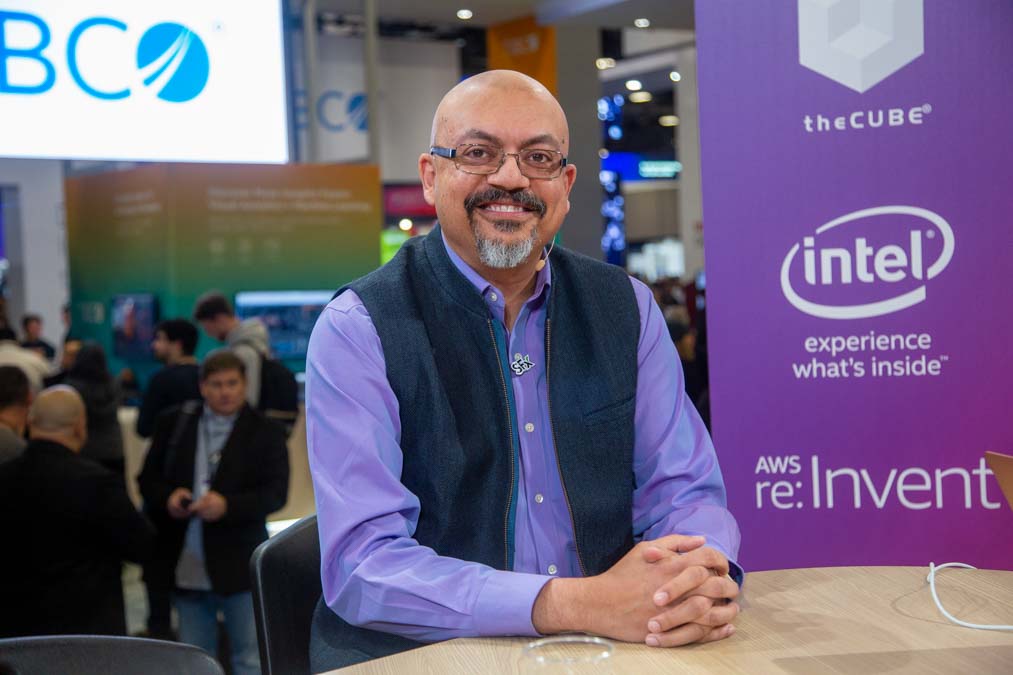 SECURITY
SECURITY
 SECURITY
SECURITY
 SECURITY
SECURITY
Why do some businesspeople spend as little time thinking of observability as they can get away with? Maybe they’d rather not dwell on the ugly thought of system problems occurring. Would they warm up to it if it didn’t merely remedy problems, but also had some nifty, value-adding tricks?
In fact, the best observability systems do, according to Arijit Mukherji (pictured), distinguished architect at Splunk Inc. It’s true that preventing and solving problems are main reasons people adopt observability tools. And now with multicloud and distributed software applications, there are more parts, more complexities, and more things that can can go wrong. But there’s a less panicky side of observability that shouldn’t be overlooked, Mukherji pointed out.
“The right view to have is … [it’s] something that accelerates your innovation,” he said.
Mukherji spoke with John Furrier (@furrier) and Lisa Martin (@LisaMartinTV), co-hosts of theCUBE, SiliconANGLE Media’s mobile livestreaming studio, during the AWS re:Invent event in Las Vegas. They discussed varying approaches to observability and the build-versus-buy question. (* Disclosure below.)
Despite increasingly advanced options on the market, some companies opt to build their own observability systems. One reason is that some — including Splunk — cost a pretty weighty chunk of change. Their customers choose to pay it because the benefits are real, according to Mukherji.
“If observability was cheap or free, most people probably wouldn’t build it,” he stated.
Both built and bought varieties may be fine depending on companies’ goals. But those with their sights set high — toward complex, microservices-based applications, or rapid, agile developer operations — may want to invest in a state-of-the-art system.
“I feel, generally speaking, it makes less and less sense for most companies to try to roll their own,” Mukherji said.
When companies know that if things break, they can quickly fix them, it changes their attitude toward the risks and rewards of trying novel things. “The confidence that teams get in making changes, whether it be configuration changes or code patches, etc., because they have a good system backing them up is very, very critical,” Mukherji concluded.
Watch the complete video interview below, and be sure to check out more of SiliconANGLE’s and theCUBE’s coverage of the AWS re:Invent event. (* Disclosure: Splunk Inc. sponsored this segment of theCUBE. Neither Splunk nor other sponsors have editorial control over content on theCUBE or SiliconANGLE.)
Support our open free content by sharing and engaging with our content and community.
Where Technology Leaders Connect, Share Intelligence & Create Opportunities
SiliconANGLE Media is a recognized leader in digital media innovation serving innovative audiences and brands, bringing together cutting-edge technology, influential content, strategic insights and real-time audience engagement. As the parent company of SiliconANGLE, theCUBE Network, theCUBE Research, CUBE365, theCUBE AI and theCUBE SuperStudios — such as those established in Silicon Valley and the New York Stock Exchange (NYSE) — SiliconANGLE Media operates at the intersection of media, technology, and AI. .
Founded by tech visionaries John Furrier and Dave Vellante, SiliconANGLE Media has built a powerful ecosystem of industry-leading digital media brands, with a reach of 15+ million elite tech professionals. The company’s new, proprietary theCUBE AI Video cloud is breaking ground in audience interaction, leveraging theCUBEai.com neural network to help technology companies make data-driven decisions and stay at the forefront of industry conversations.